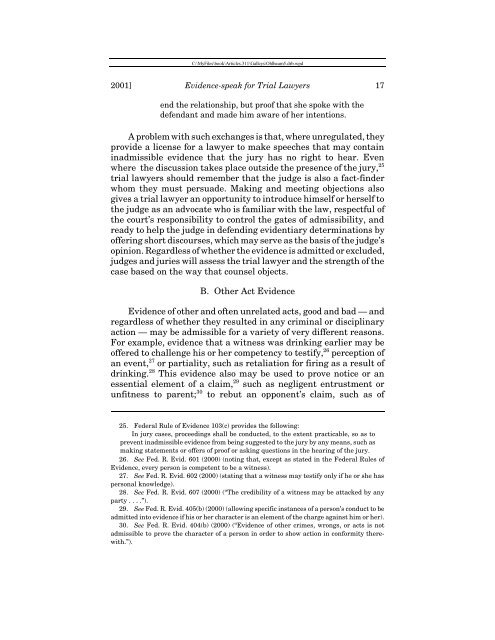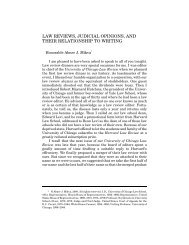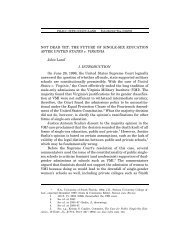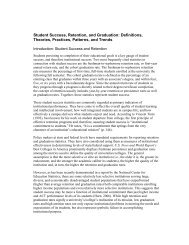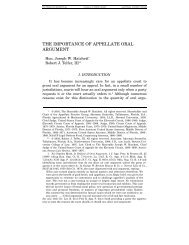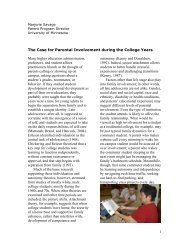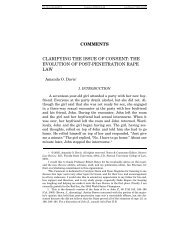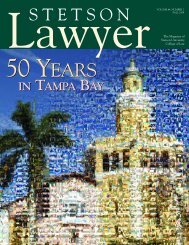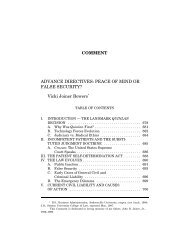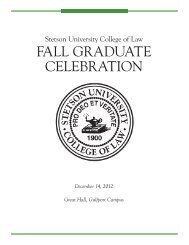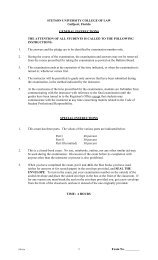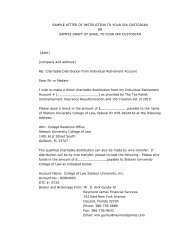Evidence-speak for Trial Lawyers - Stetson University College of Law
Evidence-speak for Trial Lawyers - Stetson University College of Law
Evidence-speak for Trial Lawyers - Stetson University College of Law
Create successful ePaper yourself
Turn your PDF publications into a flip-book with our unique Google optimized e-Paper software.
C:\MyFiles\book\Articles.311\Galleys\Ohlbaum5.drb.wpd2001] <strong>Evidence</strong>-<strong>speak</strong> <strong>for</strong> <strong>Trial</strong> <strong><strong>Law</strong>yers</strong> 17end the relationship, but pro<strong>of</strong> that she spoke with thedefendant and made him aware <strong>of</strong> her intentions.A problem with such exchanges is that, where unregulated, theyprovide a license <strong>for</strong> a lawyer to make speeches that may containinadmissible evidence that the jury has no right to hear. Evenwhere the discussion takes place outside the presence <strong>of</strong> the jury, 25trial lawyers should remember that the judge is also a fact-finderwhom they must persuade. Making and meeting objections alsogives a trial lawyer an opportunity to introduce himself or herself tothe judge as an advocate who is familiar with the law, respectful <strong>of</strong>the court’s responsibility to control the gates <strong>of</strong> admissibility, andready to help the judge in defending evidentiary determinations by<strong>of</strong>fering short discourses, which may serve as the basis <strong>of</strong> the judge’sopinion. Regardless <strong>of</strong> whether the evidence is admitted or excluded,judges and juries will assess the trial lawyer and the strength <strong>of</strong> thecase based on the way that counsel objects.B. Other Act <strong>Evidence</strong><strong>Evidence</strong> <strong>of</strong> other and <strong>of</strong>ten unrelated acts, good and bad — andregardless <strong>of</strong> whether they resulted in any criminal or disciplinaryaction — may be admissible <strong>for</strong> a variety <strong>of</strong> very different reasons.For example, evidence that a witness was drinking earlier may be<strong>of</strong>fered to challenge his or her competency to testify, 26 perception <strong>of</strong>an event, 27 or partiality, such as retaliation <strong>for</strong> firing as a result <strong>of</strong>drinking. 28 This evidence also may be used to prove notice or anessential element <strong>of</strong> a claim, 29 such as negligent entrustment orunfitness to parent; 30 to rebut an opponent’s claim, such as <strong>of</strong>25. Federal Rule <strong>of</strong> <strong>Evidence</strong> 103(c) provides the following:In jury cases, proceedings shall be conducted, to the extent practicable, so as toprevent inadmissible evidence from being suggested to the jury by any means, such asmaking statements or <strong>of</strong>fers <strong>of</strong> pro<strong>of</strong> or asking questions in the hearing <strong>of</strong> the jury.26. See Fed. R. Evid. 601 (2000) (noting that, except as stated in the Federal Rules <strong>of</strong><strong>Evidence</strong>, every person is competent to be a witness).27. See Fed. R. Evid. 602 (2000) (stating that a witness may testify only if he or she haspersonal knowledge).28. See Fed. R. Evid. 607 (2000) (“The credibility <strong>of</strong> a witness may be attacked by anyparty . . . .”).29. See Fed. R. Evid. 405(b) (2000) (allowing specific instances <strong>of</strong> a person’s conduct to beadmitted into evidence if his or her character is an element <strong>of</strong> the charge against him or her).30. See Fed. R. Evid. 404(b) (2000) (“<strong>Evidence</strong> <strong>of</strong> other crimes, wrongs, or acts is notadmissible to prove the character <strong>of</strong> a person in order to show action in con<strong>for</strong>mity therewith.”).


